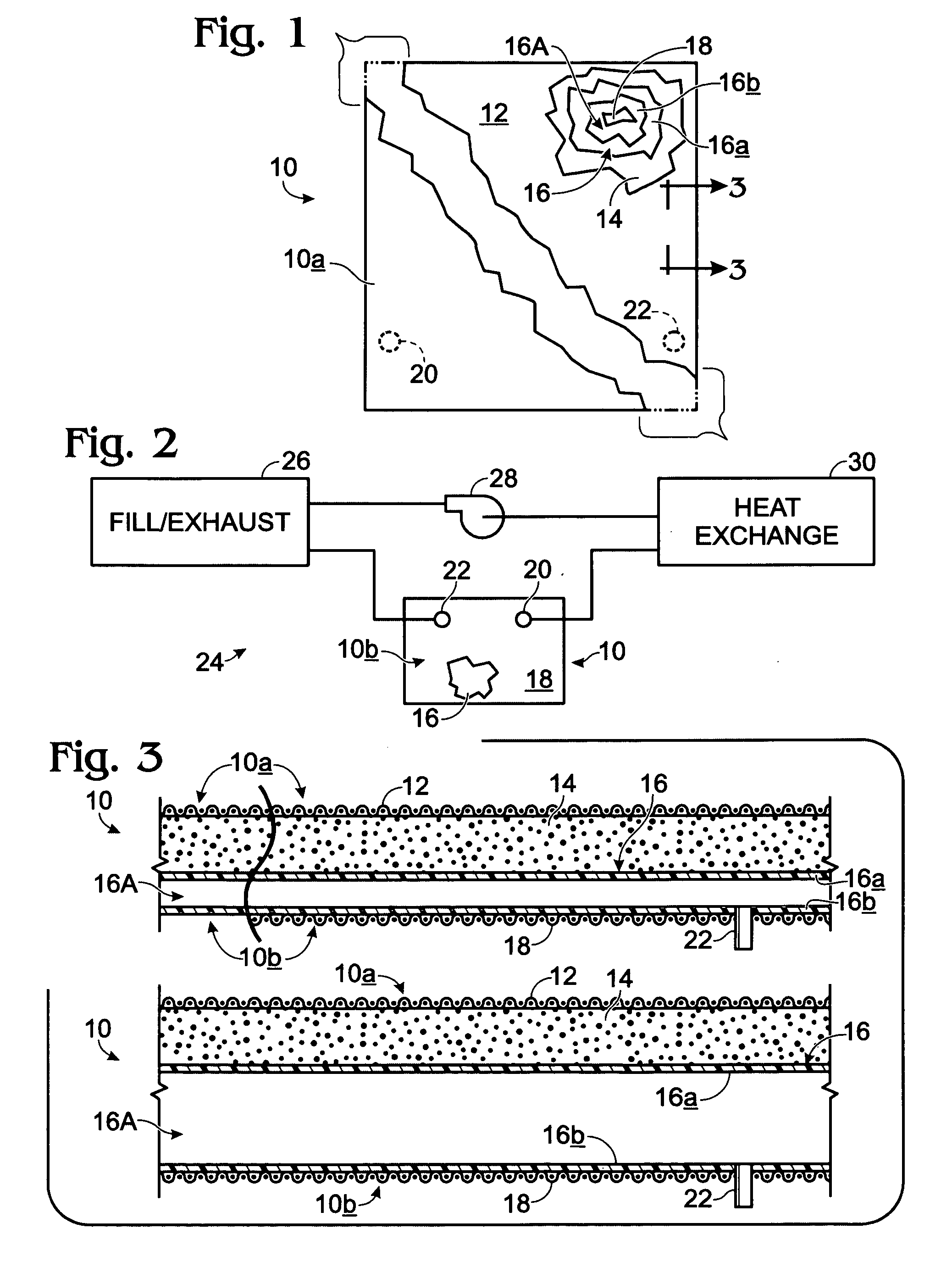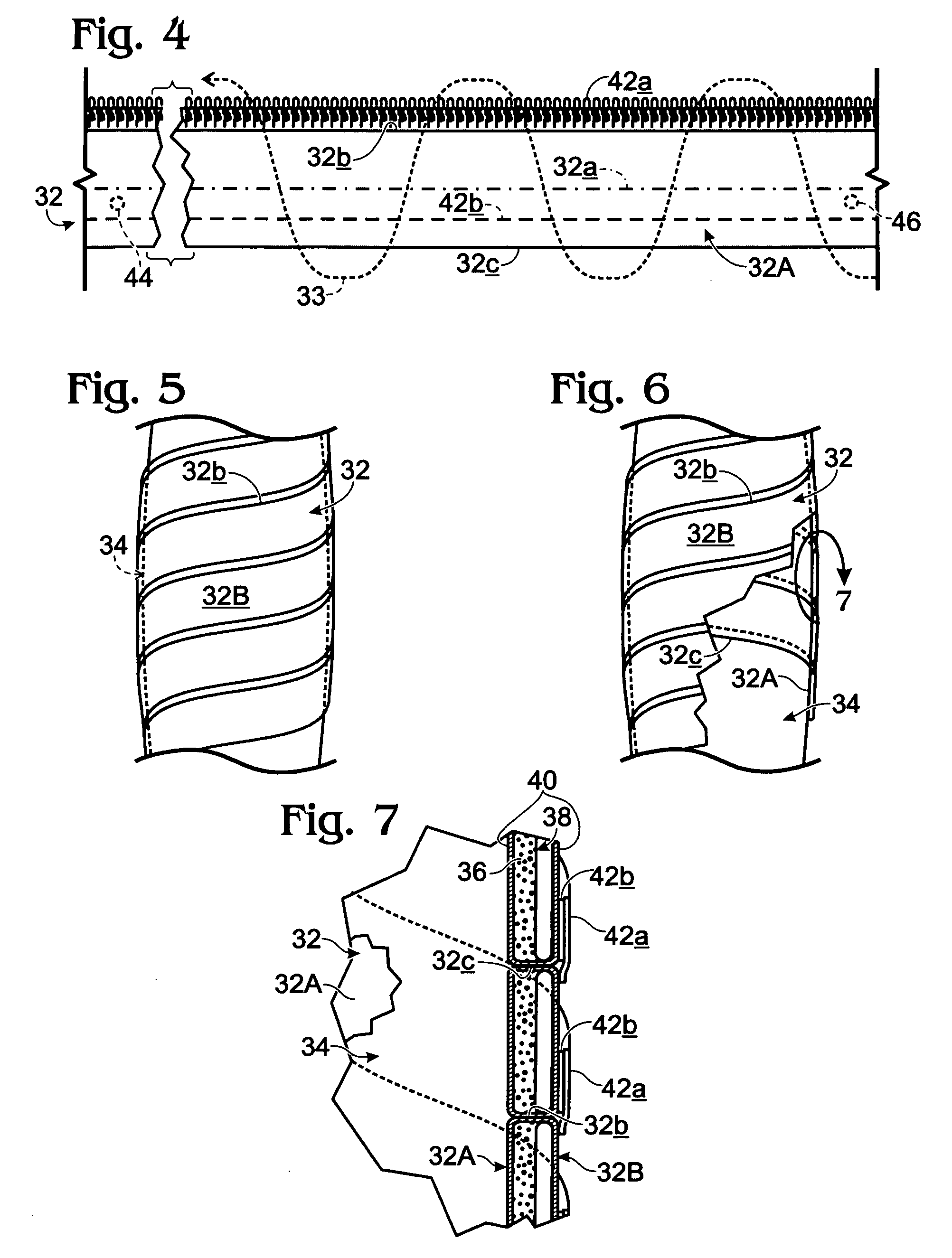Bandaging structure and methodology
a bandaging structure and wound technology, applied in the field of wound bandaging, can solve the problems of insufficient pressure-applying bandage, bandaging condition, and many conventional bandaging approaches that do not achieve ideal pressure-applying conditions in the bandaged wound area
- Summary
- Abstract
- Description
- Claims
- Application Information
AI Technical Summary
Benefits of technology
Problems solved by technology
Method used
Image
Examples
Embodiment Construction
[0022]Turning now to the drawings, and referring first of all to FIGS. 1-3, inclusive, indicated generally at 10 is a preferred and best-mode patch-form modification, or embodiment, of a dynamic-action, pliable, anatomically conformable (in a pressure and temperature sense), layered wound-bandaging structure constructed in accordance with the present invention. Structure 10 includes what is referred to herein as an anatomy side 10a and a non-anatomy side 10b. When bandaging structure 10 is in place in relation to a wound area, it substantially completely covers that area, as determined, of course, by one having chosen an appropriate bandaging-structure size—entirely a matter of choice under the control of the user—with anatomy side 10a disposed, effectively, directly adjacent and against the wound area, and non-anatomy side 10b facing outwardly away from that area.
[0023]As was mentioned above herein with respect to the descriptions of the several drawings, in FIG. 3, the upper and l...
PUM
 Login to View More
Login to View More Abstract
Description
Claims
Application Information
 Login to View More
Login to View More - R&D
- Intellectual Property
- Life Sciences
- Materials
- Tech Scout
- Unparalleled Data Quality
- Higher Quality Content
- 60% Fewer Hallucinations
Browse by: Latest US Patents, China's latest patents, Technical Efficacy Thesaurus, Application Domain, Technology Topic, Popular Technical Reports.
© 2025 PatSnap. All rights reserved.Legal|Privacy policy|Modern Slavery Act Transparency Statement|Sitemap|About US| Contact US: help@patsnap.com



